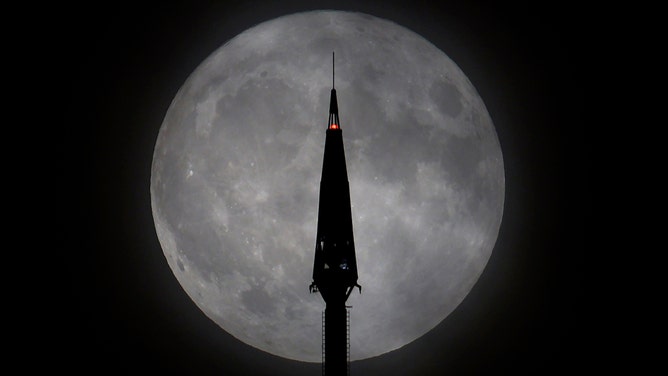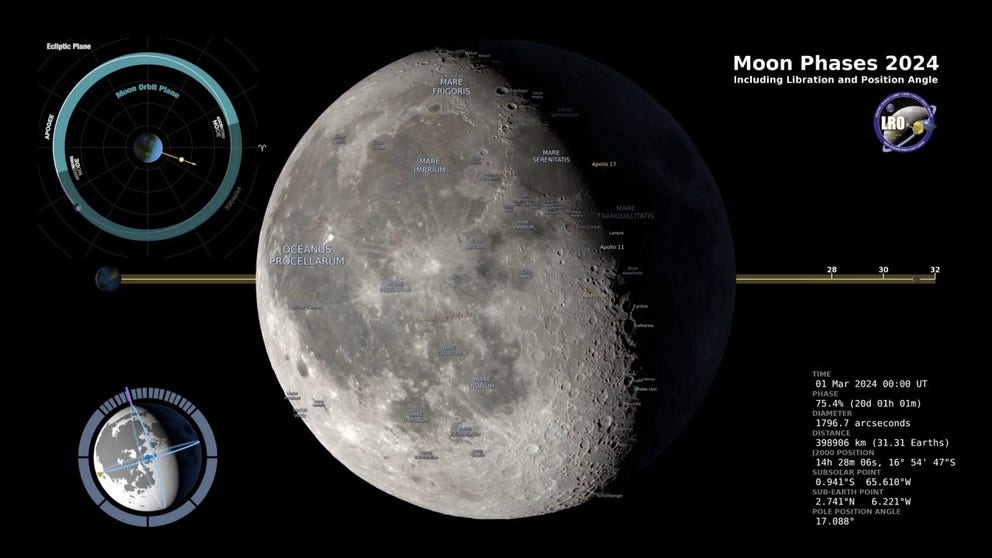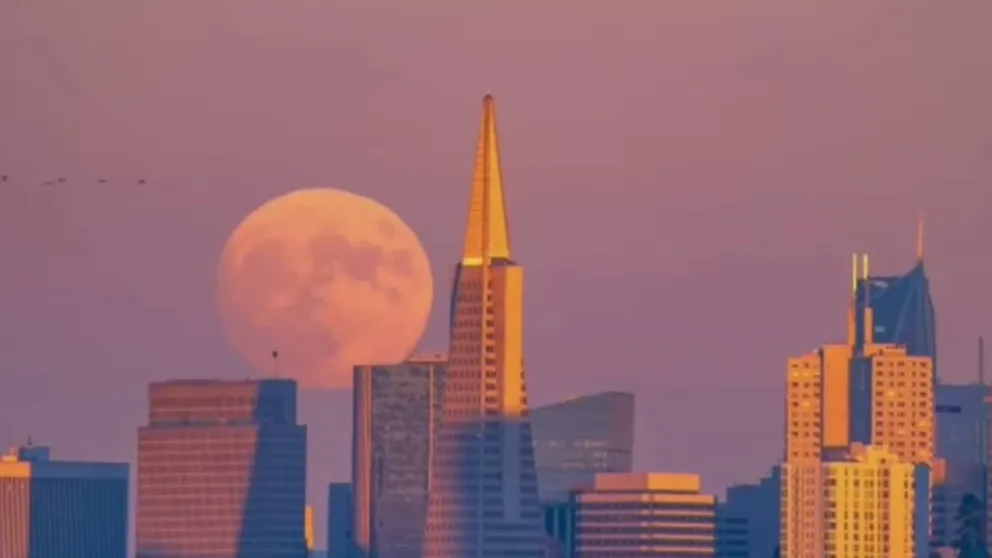Don't miss the rare Blue Supermoon rising Monday
Also known as the Sturgeon Moon, the eighth full Moon of the year will be at its brightest at 2:25 p.m. EDT. However, people in North America will have to wait until the Sun sets and the Moon rises to see the phenomenon.
2024 Moon phases for the Northern Hemisphere
NASA produced a rendering of the Moon's phases in 2024.
Stargazers will witness a rare and breathtaking celestial sight Monday evening as a Blue Supermoon lights up the sky.
The eighth full Moon of the year will be at its brightest at 2:25 p.m. EDT. However, people in North America will have to wait until the Sun sets and the Moon rises to see the phenomenon. It occurs when the Moon is at perigee, its closest distance to the Earth, and it appears larger and brighter than usual.

The Blue Supermoon rises behind the antenna on top of One World Trade Center in New York City on August 30, 2023, as seen from Jersey City, New Jersey.
(Gary Hershorn / Getty Images)
On Monday, the Moon will look 14% larger during the Supermoon and illuminate Earth with 30% more light than the dimmest full Moon when it's farthest away in its orbit, according to NASA.
A so-called Blue Moon has nothing to do with the Moon's color; it's simply the term for two full moons in a month. In this case, it is being used in this second meaning – the third full Moon of a season. Monday's full Moon will be the third of the summer with the first two happening on June 21 and July 21.
On rare occasions, tiny particles in the air ― typically of smoke or dust ― can scatter away red wavelengths of light, causing the Moon to appear blue, according to NASA.
FILE – Sturgeon Supermoon rises over New York City
Video shows the Sturgeon Supermoon rising over New York City on Aug. 1, 2023. It's the first of two full moons in August. (Video by @dantvusa/Twitter)
The Maine Farmer's Almanac began publishing Native American names for full Moons in the 1930s and these names have become widely known and used, according to retired NASA Program Executive Gordon Johnston. Monday's event is widely known as the Sturgeon Moon.
"According to this almanac, as the full Moon in August the Algonquin tribes in what is now the northeastern USA called this the Sturgeon Moon after the large fish that were more easily caught this time of year in the Great Lakes and other major bodies of water," Johnson said. "Other names reported for this Moon include the Red Moon, the Corn or Green Corn Moon, the Barley Moon, the Herb Moon, the Grain Moon and the Dog Moon."
FILE – Stunning footage shows Sturgeon moon rising over San Francisco
Footage captures the stunning moments the last supermoon of 2022 rose over San Francisco, California on Thursday night. (Video: Shreenivasan Manievannan via Storyful)
You don't want to miss the chance to marvel at this awe-inspiring celestial display, but don't worry if the weather is not cooperating in your area. The Moon will appear full through early Wednesday morning.
The time between Blue Supermoons is quite irregular. It can range from as little as 10 years to as much as 20 years. The next pair of Blue Supermoons is expected to occur in January and March of 2037.


